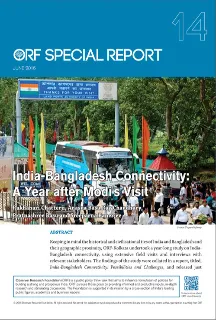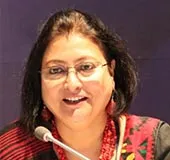INTRODUCTION
India's ties with Bangladesh comprise civilisational, cultural, religious, social and economic dimensions. These two countries share a common heritage and tragic histories. The cultural cords that tie them to each other are strong, as is their peoples' passion for music, literature and the arts. These historical ties translate, in turn, to multi-dimensional-and ever-expanding-bilateral relations. Their geographical locations complement each other and present an opportunity for both nations to strengthen their connectivities.
With these in mind, the Observer Research Foundation (ORF), Kolkata, produced a report in 2015 on India-Bangladesh Connectivity: Possibilities and Challenges.1 The report is part of a larger project on Proximity to Connectivity: India and her Eastern and Southeastern Neighbours, a major research project by ORF-Kolkata. The project focuses on India's connectivity with Bangladesh and Myanmar on the east, with Nepal and Bhutan as Himalayan neighbours along with China in the north. For the present study, the primary means of connectivity signified physical connectivity comprising land (through road and rail networks) and water (through sea, port and inland water ways). Further, the study intended to explore collaboration in the field of energy (gas, electricity, hydropower); coordination in border management to facilitate movement of people across the border states (through tourism, local trade, operationalising border haats, among others) and the institutional and administrative mechanisms necessary for coordination among various agencies and stakeholders.
On 2 June 2015, some days before Indian Prime Minister Narendra Modi's visit to Bangladesh, the first report under the project, Proximity to Connectivity: India and her Eastern and Southeastern Neighbours, was released. It is of interest to examine how the recommendations made in the report-which were synthesised based on documentary evidence and extensive field work-have reflected in recent bilateral initiatives.
The views expressed above belong to the author(s). ORF research and analyses now available on Telegram! Click here to access our curated content — blogs, longforms and interviews.

 PDF Download
PDF Download



 PREV
PREV




.png)
.png)